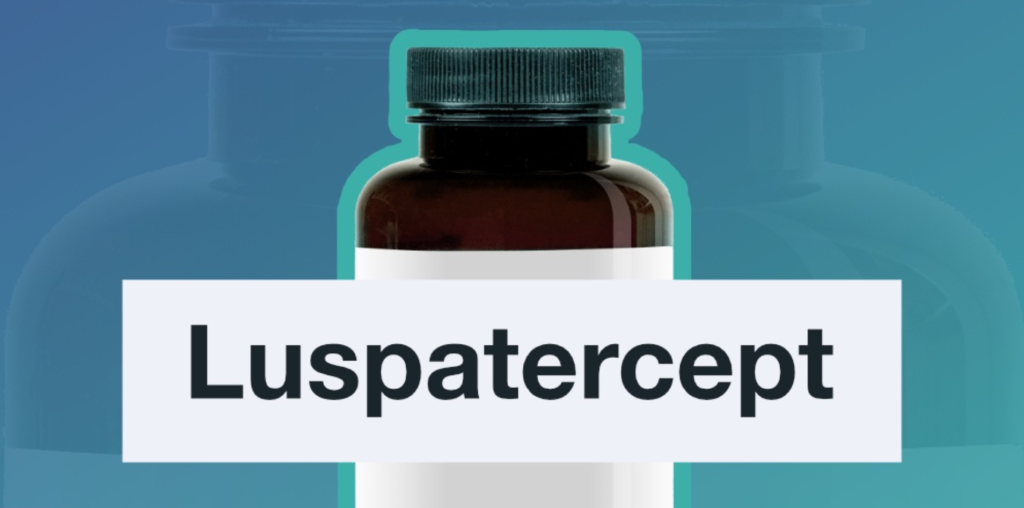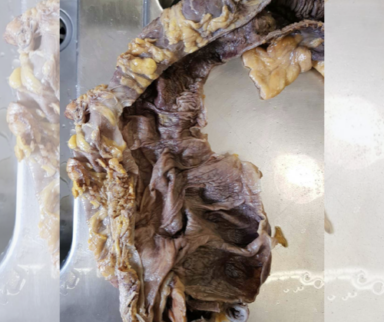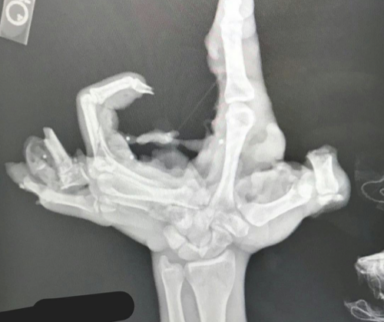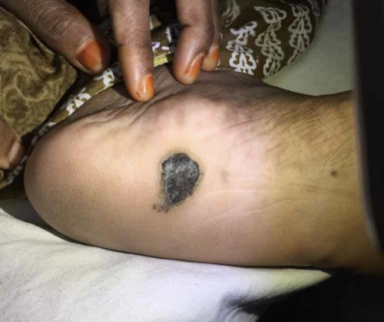
Myelodysplastic syndromes are a diverse group of bone marrow disorders responsible for impaired maturation of blood cells. As a result, patients develop an increasingly limited amount of blood cells circulating in their blood and have a significantly increased risk of developing acute myeloid leukemia.
Let’s focus on one particular case: a patient with lower-risk MDS ring sideroblasts and anemia, as well as the absence of a 5q deletion. The first line treatments for this are erythropoiesis stimulating agents, or ESA. But suppose the patient has been on ESA for a while now and is no longer responding to treatment. What would you do then?
Many patients at this point are treated either with chemotherapy, or revert back to regular blood transfusions, which are disruptive to the patient’s life. But, the U.S. Food & Drug Administration (FDA) approved a drug called luspatercept, which reduces the need for blood transfusions in between one-third and one-half in patients.
FDA Approval
Luspatercept was tested in a Phase 3 clinical trial for patients who met the following criteria:
- They have MDS with ring sideroblasts or some other myeloid neoplasm
- They are classified with very low, low, or intermediate risk MDS
- They have been receiving at least two units of blood transfusions over eight weeks
- They must no longer be responsive to ESA, be intolerant to it, or have a serum erythropoietin of over 200 milliunits per liter
In this trial, patients were excluded from participation if they had a 5q deletion mutation, white blood cell counts of over 13, neutrophils of under 0.5, or platelets of under 50. The participants were also mostly white, male, and on average, 71 years old.
And here’s what they found. There were 153 patients in the treatment arm and 76 patients in the placebo arm. The trial showed that 38% of people who received the drug were able to go without a blood transfusion for at least eight weeks, compared to 13% of those in the placebo group. Similarly, 28% of people who received the drug were able to go without a blood transfusion for 12 weeks or more, compared to 8% of people in the placebo group. The difference between these groups was statistically significant. But there’s more to this story.
Effective Duration
Here’s a quick summary of the trial data:
- The response rate of the drug is 38%, so it’s not going to work for everyone.
- The study primarily looked at an effective duration over 24 weeks, although it did follow patients up to 48 weeks.
- Some patients had a period of transfusion independence, then had one blood transfusion, then had another period of transfusion independence, so don’t stop the drug at the first blood transfusion.
- Some patients continued to be responsive to the drug even after the study concluded, thus it’s probably effective for longer than reported. The median duration of transfusion independence was 32 weeks.
Dr. Mikkael Sekeres is the chief of hematology at the Sylvester Comprehensive Cancer Center at the University of Miami. We asked him what he thinks this trial data tells us.
“On the luspatercept trial, the median response duration was 31 weeks. So, a person with dependence on blood transfusions before the trial started, received luspatercept, and then 38% of those patients went a period of at least eight weeks without a blood transfusion, but a median of 31 weeks without a blood transfusion,” says Dr. Sekeres.
“Now, that duration of response – the period of time that person went without a blood transfusion – is tricky, because on the trial, that person could have gone 30 weeks without a transfusion, then received one blood transfusion, continued on the luspatercept, and gone another 30 weeks, explains Dr. Sekeres. “You would think that should count for about 60 weeks of a person going without a blood transfusion, but by the rules of this study, that was counted as a 30-week duration.”
Dosing
So how should you dose luspatercept? The FDA suggests starting a patient at 1 mg/kg, administered subcutaneously once every three weeks. If after two consecutive doses the patient still requires transfusions, consider increasing the dose to 1.33 mg/kg following the same administration schedule. If that doesn’t work after two more consecutive doses, the dose should be increased again to 1.75 mg/kg.
And at this point, if the patient is non-responsive to the drug for three consecutive doses, consider ending your trial of therapy. As always, use your own discretion because every case is a little different.
Side Effects
“The side effects to luspatercept were actually pretty mild, and in fact, if you look at them, you think to yourself, ‘Gee, these sound like the side effects of people in general with myelodysplastic syndrome,’ and that’s another one of the challenges of assessing the side effects of a trial of myelodysplastic syndromes because people have side effects from their disease and that may be confused with side effects for the drug,” shares Dr. Sekeres.
Of the adverse events related to the drug, the most common included fatigue, nausea, dizziness, and dyspnea.
The Takeaways
So, luspatercept is an FDA-approved treatment option to reduce the need for blood transfusions in transfusion-dependent, lower-risk MDS patients with ring sideroblasts, and it works in 38% of patients.
For those who are responsive to the drug, many of them can expect to be blood transfusion free for periods over 32 weeks. Some patients may experience a period of transfusion independence, then require a transfusion, and then will have another stretch of transfusion independence, so don’t stop the drug at the first blood transfusion. As for side effects, they’re similar to the MDS condition itself, fatigue, muscle pain, and dizziness.
We’ve covered a lot of information. If you want to read more, you can view the FDA approval label and the publication of the trial by Fenaux et al. There’s also our printable patient information sheet.

By Kyle Slinn, RN, BScN, MEd
Registered Nurse
Published April 25, 2022
Join the Conversation
Sign up for Figure 1 and be part of a global community of healthcare professionals gaining medical knowledge, securely sharing real patient cases, and improving outcomes.


